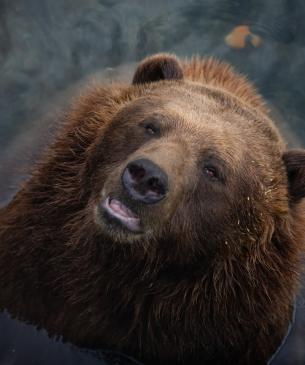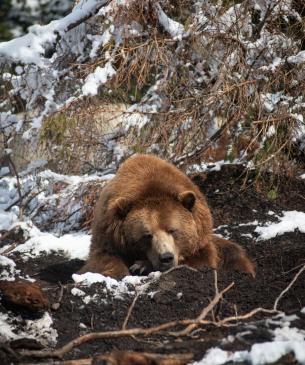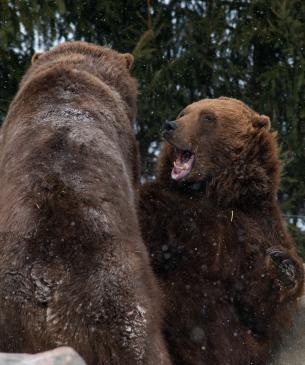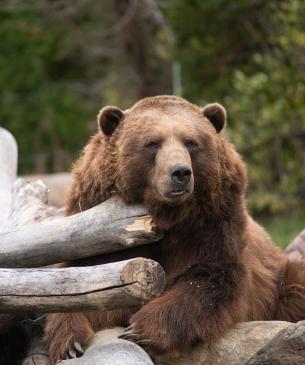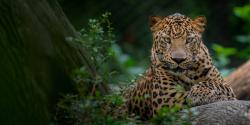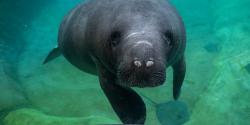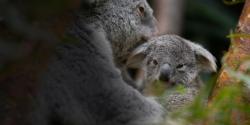The brown bear has at least two subspecies found in North America: the grizzly bear and the Kodiak bear. These subspecies are classified based on where they live and their geographic range.
Grizzly bears usually live in inland areas of the Arctic and in the lower 48 states. In contrast, Kodiak bears are named after the Kodiak Archipelago, the specific area where they are found.
At the Columbus Zoo, the brown bears come from the Alaskan coastline, which means they are simply referred to as brown bears.
Scientific Name: Ursus arctos
Conservation Status: Least Concern
Size: Average height is 4 to 5 ft. at the shoulder and 8 to 10 ft. when standing on hind legs.
Weight: 300 to 1300 lbs. Male bears are close to two times heavier than females. Due to the variations in weather conditions and behaviors of bears, the weight can vary between subspecies and locations.


